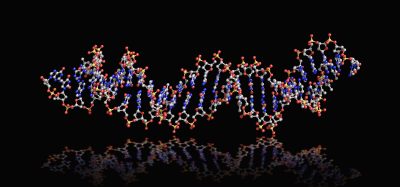Researchers reveal therapeutic target for Influenza A
Posted: 25 June 2018 | Drug Target Review | No comments yet
Researchers show altering the molecular interactions between the flu virus and host genes stunts virus replication…


Influenza A (flu A) hijacks host proteins for viral RNA splicing and blocking these interactions caused replication of the virus to slow, according to new research by Dr Kristin W. Lynch, chair of the Department of Biochemistry and Biophysics in the Perelman School of Medicine at the University of Pennsylvania, and doctoral student Matthew Thompson. Their results also suggest that infection with flu A may reduce splicing of some host genes, which could point to novel strategies for antiviral therapies.
Influenza A virus is a common human pathogen that causes 250,000 to 500,000 deaths per year worldwide. “Although vaccines and some antiviral drugs are available, it is crucial to understand influenza virus-host interactions at a molecular level in order to identify host vulnerabilities targeted by flu viruses, which could lead to developing new therapeutic options,” said Dr Lynch, whose lab focuses on the specific mechanisms and patterns of alternative RNA splicing and how it relates to human disease,
The transcription of DNA into messenger RNA – the process of a single gene encoding a single protein – isn’t as straightforward as once thought. The phenomenon of alternative RNA splicing – where a single gene can encode multiple proteins – was discovered over 30 years ago in viruses.
The flu A genome is comprised of eight single-strand segments of RNA. Three of these segments use alternative splicing to produce two essential viral proteins each, which are important in helping the virus gain entry into host cells. Working with cultures of human lung cells, the team’s proposed mechanism of how flu A virus interacts with human RNA splicing machinery suggests that keeping human splicing proteins from binding to the viral genome would help to stop its replication.
As a result, the researchers found that mutating sequences of the viral genome to prevent host proteins from binding caused viral RNA to splice incorrectly and eventually halt replication–thus slowing the spread of the virus in the body.
A balance between the two viral messenger RNAs must be maintained for the virus to successfully infect host cells and replicate. “Regulating splicing of the two viral proteins is a fundamental step in viral-host interaction and so a potentially new anti-viral remedy,” Dr Lynch said.
For now, her team is refining their understanding of the intricacies of viral reproduction in host cells. Their hope is to one day identify a specific molecular target for antiviral medications that can be used in the clinic.
The study has been published in Nature Communications.
Related topics
DNA, Drug Discovery Processes, Drug Targets, RNAs, Therapeutics
Related conditions
Influenza
Related organisations
Pennsylvania University
Related people
Dr Kristin W. Lynch, Matthew Thompson








